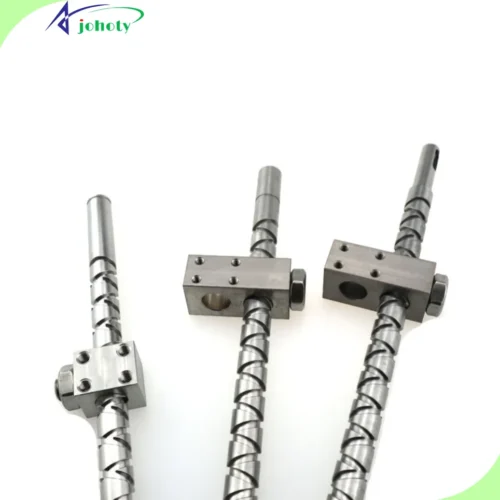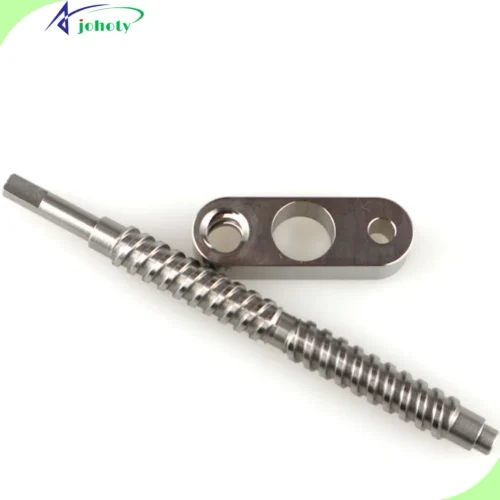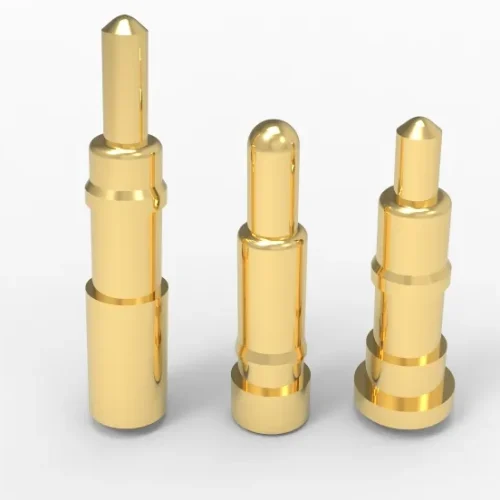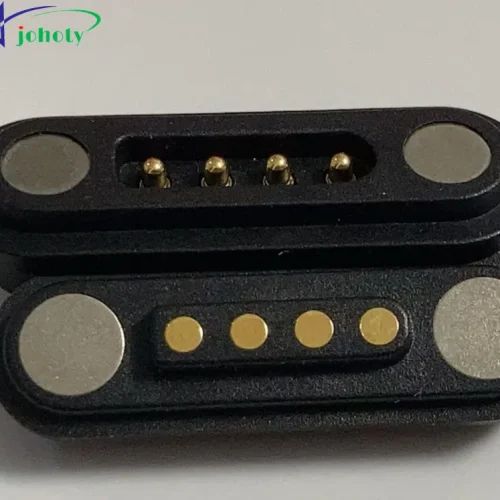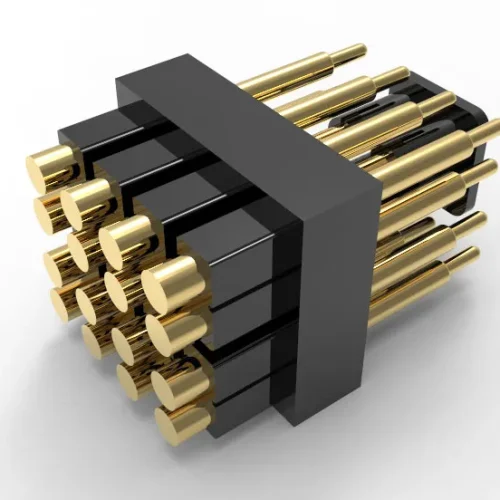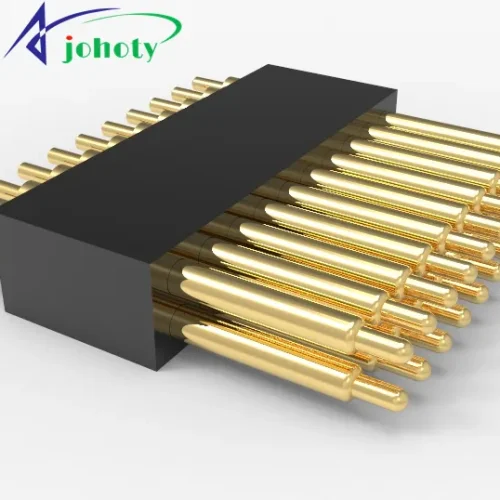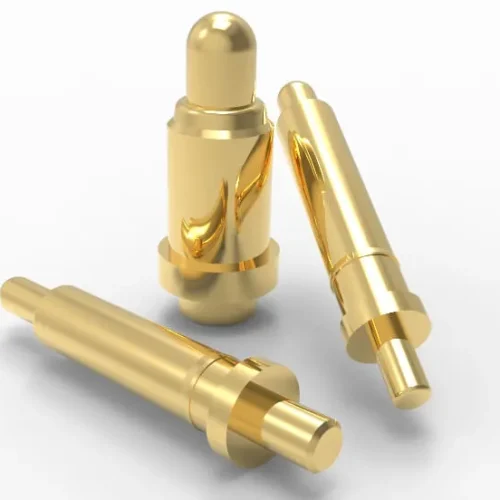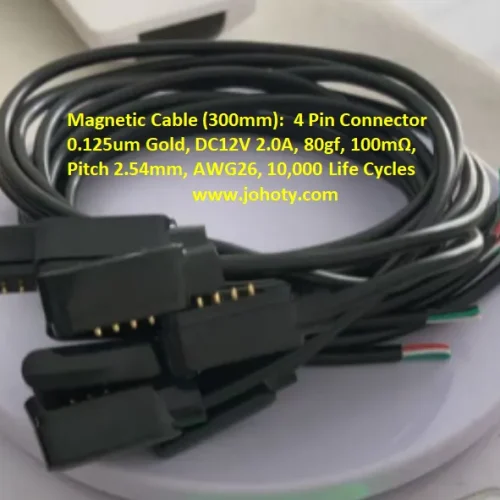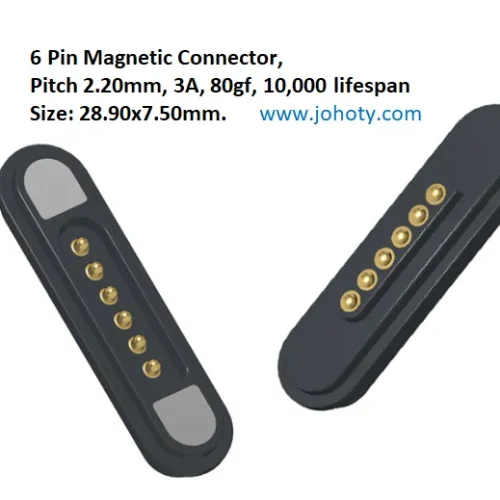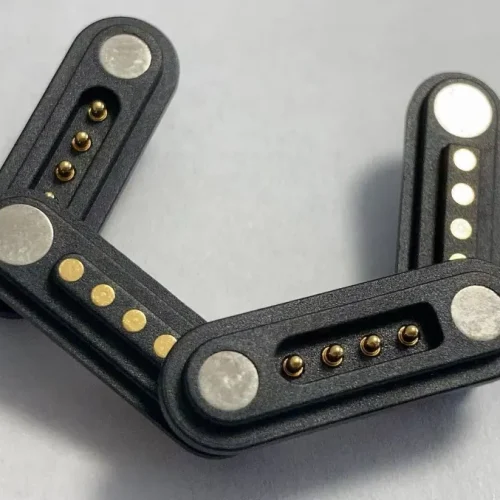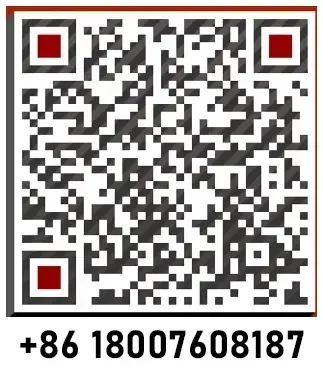How to Cut Threaded Rod, is seemingly simple yet crucial. Properly cutting threaded rods can significantly enhance project efficiency and product quality. This article delves into various aspects of cutting lead screws, including selecting appropriate tools, details of cutting techniques, and how to avoid common mistakes.
How to Cut Threaded Rod, precise thread rod cutting is crucial for ensuring mechanical performance and structural integrity. This blog provides comprehensive guidance, covering everything from selecting the appropriate tools to the technical nuances of executing precise cuts.
We’re digging deep into the ins and outs of different cutting tools. Exploring what they’re good at and where they fall short. Including manual and electric cutters, as well as efficient laser-cutting machines. Additionally, the article addresses effective measurement and marking techniques to ensure optimal results with every cut.
Whether you’re an engineer crunching specifications, a project manager orchestrating timelines, or a procurement officer sourcing materials. This blog will be your go-to source for grasping and honing your skills in cutting technology of the threaded rod. Dive in now to optimize your procurement and operational processes and ensure smooth progress on every project.
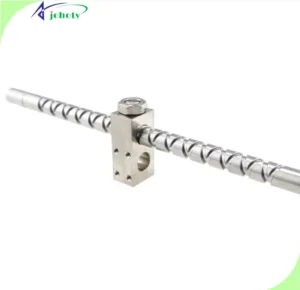
Introduction about how to cut threaded rod
As crucial components for linking and supporting structures. Precision cutting of threaded rods is crucial for ensuring mechanical performance and structural integrity. It directly impacts cost-effectiveness and project timelines. However, accurate cutting of threaded rods is no easy feat, requiring precise techniques and suitable tools. Any oversight could lead to costly material waste or project delays. Faced with increasingly fierce market competition and stringent quality requirements. Selecting the right cutting tools and methods to ensure each cut is precise becomes a challenge. It is for every procurement and project management team.
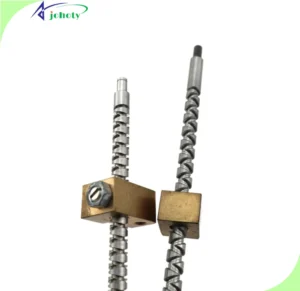
This article will delve into various methods, best practices, and industry insider tips for cutting threaded rods. Assisting you in optimizing procurement processes, and enhancing operational efficiency. This ensures your project meets the highest engineering standards while staying within budget
Basics about threaded rods
Definition
- A threaded rod is commonly referred to as a fully threaded rod or screw rod. It is a long rod with a uniform thread cut along its entire length.
- This design enables threaded rods to be used in various structures and mechanical devices. Providing adjustable length and fastening capability.
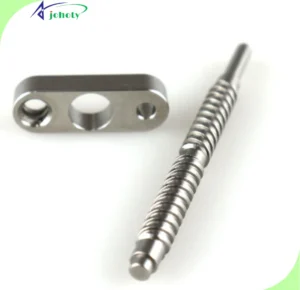
Materials
- Steel threaded rods: Widely used for their strength and durability, suitable for load-bearing structures.
- Stainless steel threaded rods: Providing additional rust and corrosion resistance, can work in extreme environments.
- Aluminum threaded rods: Lightweight, commonly used in applications where structural weight reduction is needed.
- Alloy materials: Such as titanium or special alloys, used in specific industries like aerospace, providing specific mechanical properties.
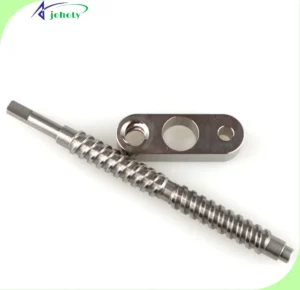
Types
- Coarse threads: Common threads, offering good tensile strength, suitable for most structural purposes.
- Fine threads: Having a tighter pitch, providing higher tension control, suitable for applications requiring precise adjustments.

Specifications
- Threaded rod specifications typically include diameter and pitch. These parameters determine the suitability and load-bearing capacity of the threaded rod.
- Specification selection should be based on specific requirements of the application, including expected loads and environmental conditions.
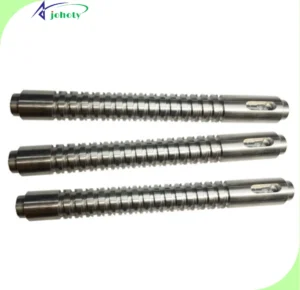
Applications
- Threaded rods are widely used in industries, such as construction, machinery, automotive, aerospace, and furniture manufacturing.
- They are used for constructing framework structures, fastening components, or as part of transmission components.
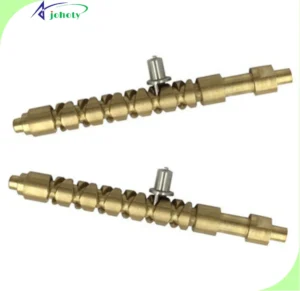
Tools and materials about how to cut threaded rod
Manual Cutting Tools
- Manual Threaded Rod Cutter: Suitable for small-scale or occasional cutting needs. This tool is cost-effective, and easy to operate, but slower in speed, suitable for occasions where precision requirements are not extremely high.
- Hacksaw: A traditional cutting tool, requiring high labor intensity, suitable for emergency or on-site adjustments.
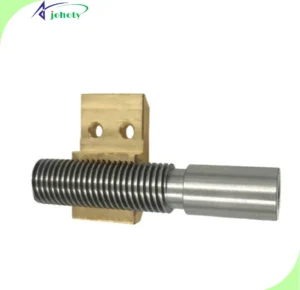
Electric Cutting Tools
- Electric Threaded Rod Cutter: Provides fast and precise cutting, suitable for production lines and situations requiring high efficiency.
- Angle Grinder: By equipping with a dedicated cutting disc, threaded rods can be quickly cut. Suitable for situations requiring rapid processing of multiple threaded rods.
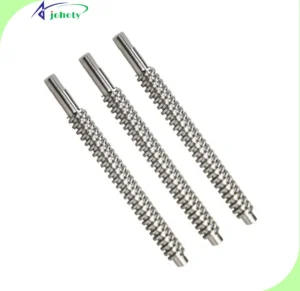
High-Precision Cutting Tools
- Laser Cutting Machine: Provides extremely high precision and speed, suitable for applications with strict requirements for cutting quality and dimensions.
- Waterjet Cutting Machine: Uses high-pressure water jets for cutting, capable of protecting the integrity and surface quality of threaded rods. Suitable for materials requiring fine processing.

Material Selection
- Cutting Disc Material: Choose cutting discs suitable for the material of threaded rods, such as silicon carbide, diamond, etc. It is to ensure the cutting effectiveness and durability of the disc.
- Lubricant: Using appropriate lubricants, such as cutting oil, can reduce heat generation during cutting, reduce wear, and improve cutting accuracy.
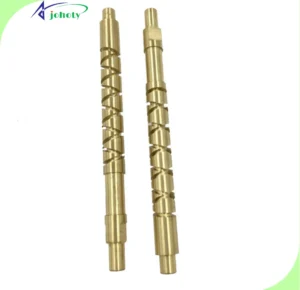
Maintenance and Safety
- Regular Inspection: Regularly inspect the wear and operating conditions of cutting tools to ensure their safety and effectiveness.
- Personal Protective Equipment: Ensure you wear the necessary personal protective gear, including safety glasses, gloves, and earplugs, when using any cutting equipment.
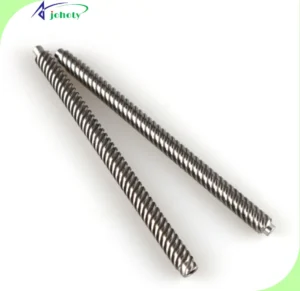
How to cut threaded rod? Steps and techniques
Preparation Stage
- Material Selection: Identify the material and diameter of the threaded rod, and choose appropriate cutting tools and blades.
- Tool Inspection: Ensure all tools and equipment are in good working condition, especially the sharpness and integrity of cutting blades.
Measurement and Marking
- Accurate Measurement: Use a tape measure to measure the threaded rod and precisely mark the cutting length according to project requirements.
- Marking Cutting Line: Use chalk or a marking pen to clearly mark the cutting point on the threaded rod.
Cutting Process
- Secure the Threaded Rod: Use a vice grip or similar tool to securely hold the threaded rod in place, ensuring it won’t move during cutting.
- Cutting: Follow the operating instructions of the selected tool for cutting. If using power tools, ensure even force application, avoiding rapid penetration of the material. It is to reduce heat generation and thread damage.
- Inspection and Correction: After cutting, inspect the end of the threaded rod for flatness and make necessary corrections using a file or grinder.
Tips and Best Practices
- Use Proper Lubricant: Using cutting oil or appropriate lubricants during cutting can reduce friction, prevent overheating, and protect the threads.
- Progressive Cutting: Especially when working with harder materials, adopt a progressive cutting method, gradually penetrating the material. It is to improve cutting accuracy and prolong tool life.
- Clean Threads: After cutting, use appropriate tools, such as thread repair tools, to clean and restore the integrity of the threads. This ensures the smooth insertion of nuts during installation.
Post-Cutting Inspection
- Visual Inspection: Visually inspect the cut threaded rod to ensure there are no cracks and severe burrs.
- Actual Fitting Test: Test fit nuts in the actual installation environment to ensure the functionality and compatibility of the cut threaded rod.
Safety measures about how to cut threaded rod
Personal Protective Equipment:
- Safety Glasses: You have to wear safety glasses during cutting operations to prevent eye injuries from metal fragments and sparks.
- Cut-resistant Gloves: Protect your hands from hot metal fragments and sharp metal edges by wearing appropriate cut-resistant gloves.
- Earplugs or Earmuffs: Use earplugs or earmuffs to reduce the risk of hearing damage from prolonged exposure to high noise levels.
Work Area Safety
- Adequate Lighting: Ensure the work area has sufficient lighting to clearly see the cutting area and work surface.
- Clean Work Environment: Ensure the workspace is tidy and free of any debris to prevent accidents and maintain productivity.
- Marking Safety Zones: Clearly mark the cutting area and restrict access to non-workers to prevent accidents.
Safety Measures for Tool Use
- Proper Tool Selection and Use: Select appropriate cutting tools based on the material and size of the threaded rod. Ensure tools are in good condition, and regularly inspect the wear of blades or cutting wheels.
- Tool Maintenance: Regularly maintain and inspect all cutting tools to ensure safety devices function properly, and operate according to manufacturer guidelines.
- Avoid Overexertion: Use appropriate force for cutting, avoiding excessive force that may cause tool damage or operational errors.
Emergency Measures
- Emergency Equipment: Ensure the work area is equipped with necessary first aid equipment, such as first aid kits and fire extinguishers.
- Emergency Training: Provide regular first aid and emergency response training to operators to ensure prompt and effective response in case of accidents.
- Accident Recording and Reporting: Record and report all cutting accidents, analyze the causes, and take preventive measures to prevent future accidents.
Cost-benefits analysis about how to cut threaded rod
Initial Costs
- Manual Cutting Tools: Low initial cost, no need for complex equipment support, suitable for limited budgets or small cutting needs. For example, manual threaded rod cutters typically range from $50 to $200.
- Electric Cutting Tools: Moderate initial investment, suitable for medium-scale production. Cost variation is very big based on features and brand. For instance, the price of electric threaded rod cutters usually falls between $200 and $1500.
- High-Precision Tools (Laser Cutting Machines/Waterjet Cutting Machines): High initial costs, suitable for applications requiring high precision and large-scale production. Prices range may be very big. For example, the price range of laser-cutting machines typically falls between $15,000 and $300,000.
Operating Costs
- Energy Consumption: Manual tools have the lowest energy consumption, while electric and high-precision tools rely more on electricity.
- Consumables: Consider the cost of materials, such as cutting discs and cutting oil. Electric and high-precision tools may require more frequent replacement of consumables.
- Labor Costs: Manual tools may require more manpower, while electric and automated equipment can reduce the need for labor. But may require operators with higher skills.
Maintenance Costs
- Regular Maintenance: All types of tools require regular inspection and maintenance to maintain good working condition and extend service life.
- Replacement Parts: Maintenance costs for high-precision tools, such as laser cutting machines are higher than conventional electric tools. Because their parts are more expensive and complex.
Long-Term Cost Benefits
- Production Efficiency: Although high-precision tools have high initial investment, their high efficiency and low error rate can reduce material waste and improve productivity.
- Product Quality: High-quality cutting reduces the need for subsequent processing, reducing overall production costs. Return on Investment (ROI): Calculate the ROI of each type of tool based on frequency of use and production scale. It can help businesses evaluate the best investment choice.
Use cases about cutting a threaded rod
Background:
- The client is an automotive component manufacturing company. They faced market competition pressure and sought to enhance the precision and production efficiency of its components.
- They decided to adopt high-precision cutting threaded rod technology to manufacture key transmission components.
Technical Innovations:
- Material Selection: Opt for high-strength, wear-resistant steel as the raw material for the threaded rods. It is to ensure stability and durability during long-term use.
- Precision Cutting Technology: Employing advanced laser cutting technology combined with CNC programming to achieve high-precision processing of threaded rods. Laser cutting can improve cutting accuracy and reduce production time drastically.
- Surface Treatment: Introducing unique heat treatment and surface coating technologies to enhance the friction coefficient and corrosion resistance of the lead screws.
Cost-Benefit Analysis:
- Cost Savings: Utilizing automated high-precision equipment reduces labor costs and manufacturing errors, consequently lowering the scrap rate.
- Production Efficiency: The introduction of automated production lines reduces the production time for single-piece products from 30 minutes to 10 minutes. This greatly enhances production efficiency.
Market Acceptance and Customer Feedback:
- Customer Satisfaction: Following the introduction of the new technology, the client’s primary customers expressed high satisfaction. Particularly regarding product consistency and reliability.
- Market Expansion: The improved products enable the client to enter more stringent aviation and medical equipment markets, further expanding their business scope.
Conclusion and Future Outlook:
- By introducing high-precision cutting threaded rod technology, the client enhances product quality and optimizes cost structures and production processes. In the future, the client plans to keep allocating various resources to R&D.
- They are to explore more automation and intelligent manufacturing solutions to meet evolving market demands.
Conclusion and recommendations:
Technology Selection
- Comparative Analysis of Technologies: When selecting the technology for cutting threaded rods, it’s essential to consider the differences between different techniques. Such as manual cutting, electric cutting, and laser cutting. Each method has specific applications. For instance, laser cutting is suitable for precision and large-scale production. While manual cutting may be more suitable for small batches or on-site adjustments.
- Technology Updates: Given the rapid advancement in manufacturing technology, regularly assessing and updating cutting equipment is crucial for maintaining competitiveness. Investing in automation and intelligent technology can significantly improve production efficiency and product quality.
Cost Management
- Total Lifecycle Cost Analysis: When purchasing cutting equipment, it’s important to consider the initial purchase cost, maintenance, operation, and potential upgrade costs. Selecting equipment with a high cost-effectiveness ratio. Ultimately, It may lead to significant long-term cost benefits.
- Supply Chain Optimization: It’s recommended to establish long-term partnerships with suppliers to secure better prices and services. Additionally, cost reduction can be further achieved through centralized purchasing and bulk ordering.
Safety and Environmental Factors
- Safety Protocols: Guarantee that all tasks are carried out in accordance with industry safety regulations and conduct ongoing safety training for operators. Using equipment with safety precautions can reduce workplace accidents.
- Environmental Impact: Consider adopting eco-friendly technologies and recycling mechanisms to reduce waste and emissions during the production process. This aids in fulfilling regulatory obligations and boosts the company’s reputation.
Future Trends
- Continuous Monitoring of Technological Developments: With technology advancements, new cutting methods and materials may emerge. Companies should remain flexible and be prepared to embrace new technologies to maintain industry leadership.
- Data-Driven Decision Making: Harness the power of data analysis tools to optimize both production workflows and supply chain operations. Data-driven approaches can help predict market changes and better adjust production strategies.
FAQ
1. What tool is best suited for cutting threaded rods?
Picking the suitable tool involves considering various factors. Such as the frequency of cutting, the level of precision required, and the budget available. Manual threaded rod cutters are suitable for small-scale or infrequent cutting. Electric threaded rod-cutting machines are ideal for meeting the production demands of medium-sized operations. While laser-cutting or water-cutting machines are suitable for environments requiring high precision and large-scale production.
2. How to ensure accuracy during cutting a threaded rod?
Ensuring accuracy is key to using the right tools and techniques. Ensure the threaded rod is properly measured and securely fastened before cutting. Use sharp and material-appropriate cutting discs, and use appropriate lubricants during cutting to reduce friction and heat.
3. How to reduce material waste when cutting threaded rods?
Accurate measurement and the use of high-precision cutting tools are crucial. Plan cutting tasks to maximize material usage, and leave enough but not excessive margins. And using laser or water-cutting technology can significantly reduce waste.
4. What safety steps should be adhered to when cutting threaded rods?
Ensure you’re wearing the necessary personal protective equipment. Including safety glasses, gloves, and earplugs, whenever you’re operating cutting tools. Ensure all cutting tools are well maintained and regularly inspected. Keep the work area clean and unobstructed, avoiding any environments that may cause injury.
5. How to handle the cut surface after cutting threaded rods?
The cut surface of threaded rods usually needs deburring. You can use a grinding stone or sandpaper to gently polish the cut surface to ensure it is smooth and burr-free. For applications requiring extremely high precision, additional processing steps may be necessary to meet the required specifications.
6. How should maintenance and upkeep of cutting tools be done?
Regularly clean and inspect all parts of the cutting tools, especially the cutting edges or discs. Make sure to lubricate all moving parts sufficiently and adhere to the maintenance guidelines outlined by us. For power tools and high-precision machines, regular professional maintenance is necessary.
7. How to choose the appropriate cutting tools and materials?
The choice of the right tools and materials depends on the material, diameter, and cutting volume of the threaded rod. For hard materials or large-diameter threaded rods, electric or laser cutting tools are recommended. For softer materials or smaller diameters, manual cutting tools can be considered.

